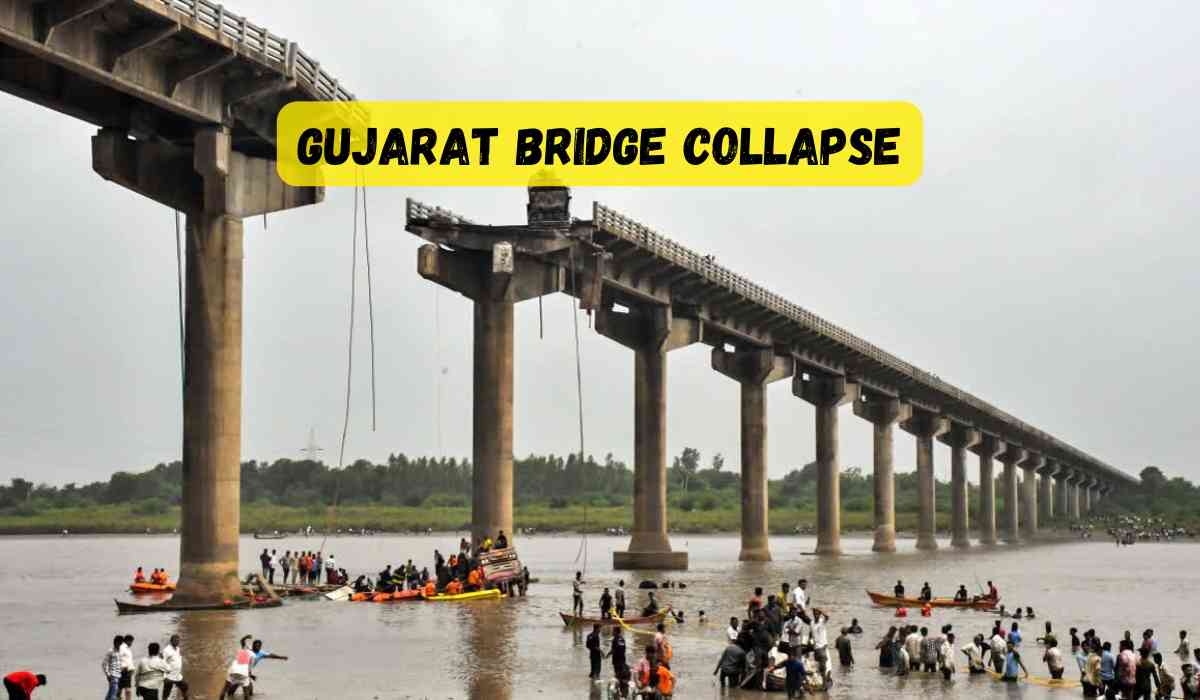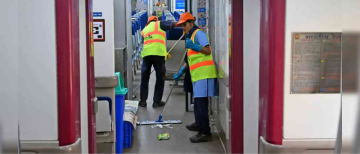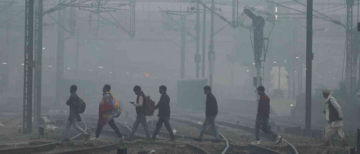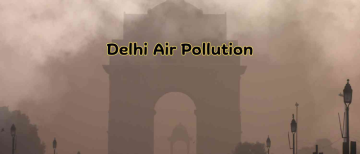In a tragic reminder of the crumbling infrastructure in parts of India, the death toll from the collapse of the Gambhira Bridge in Gujarat's Vadodara district has risen to 15. Search and rescue efforts continue for the four individuals still missing after a section of the 40-year-old bridge gave way on the morning of July 9, sending multiple vehicles plummeting into the swollen Mahisagar River below.
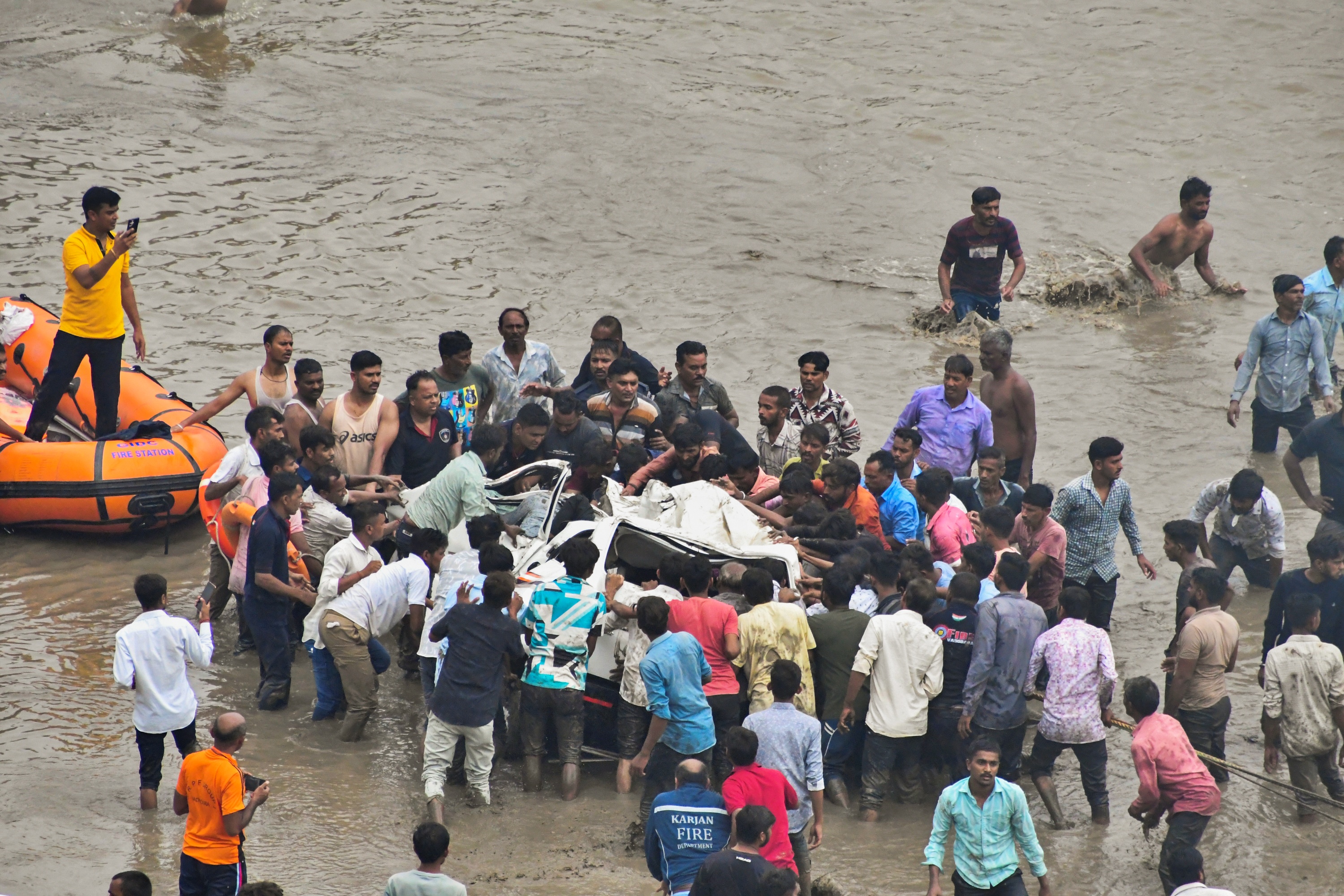
The Catastrophic Collapse of the Gambhira Bridge
The Gambhira Bridge, constructed in 1985, was a critical link between the Vadodara and Anand districts. On the morning of the incident, a slab measuring approximately 10–15 meters between two piers suddenly crumbled, leading to the fall of at least five vehicles — including two trucks, two pickup vans, and a rickshaw — into the river.
Rescue teams recovered three additional bodies on Thursday, raising the official death count to 15. Authorities fear that more vehicles, including a car and a truck, are still submerged in the riverbed’s thick, three-meter-deep mud. The intense monsoon rains have worsened the situation, causing water levels in the river to rise and hampering ongoing rescue operations.
Challenges Facing Rescue Operations
Rescue efforts, led by the National Disaster Response Force (NDRF) and the State Disaster Response Force (SDRF), have been ongoing since the collapse. The muddy riverbed, heavy rainfall, and poor visibility have significantly slowed down progress. Search teams are combing up to 4 kilometers downstream in their efforts to locate the missing individuals and any remaining submerged vehicles.
Vadodara District Collector Anil Dhameliya confirmed that a temporary bridge is being constructed to assist rescue teams. He urged the public to report any information regarding missing persons or unaccounted vehicles to the local control room, emphasizing the role of community involvement in aiding the ongoing mission.
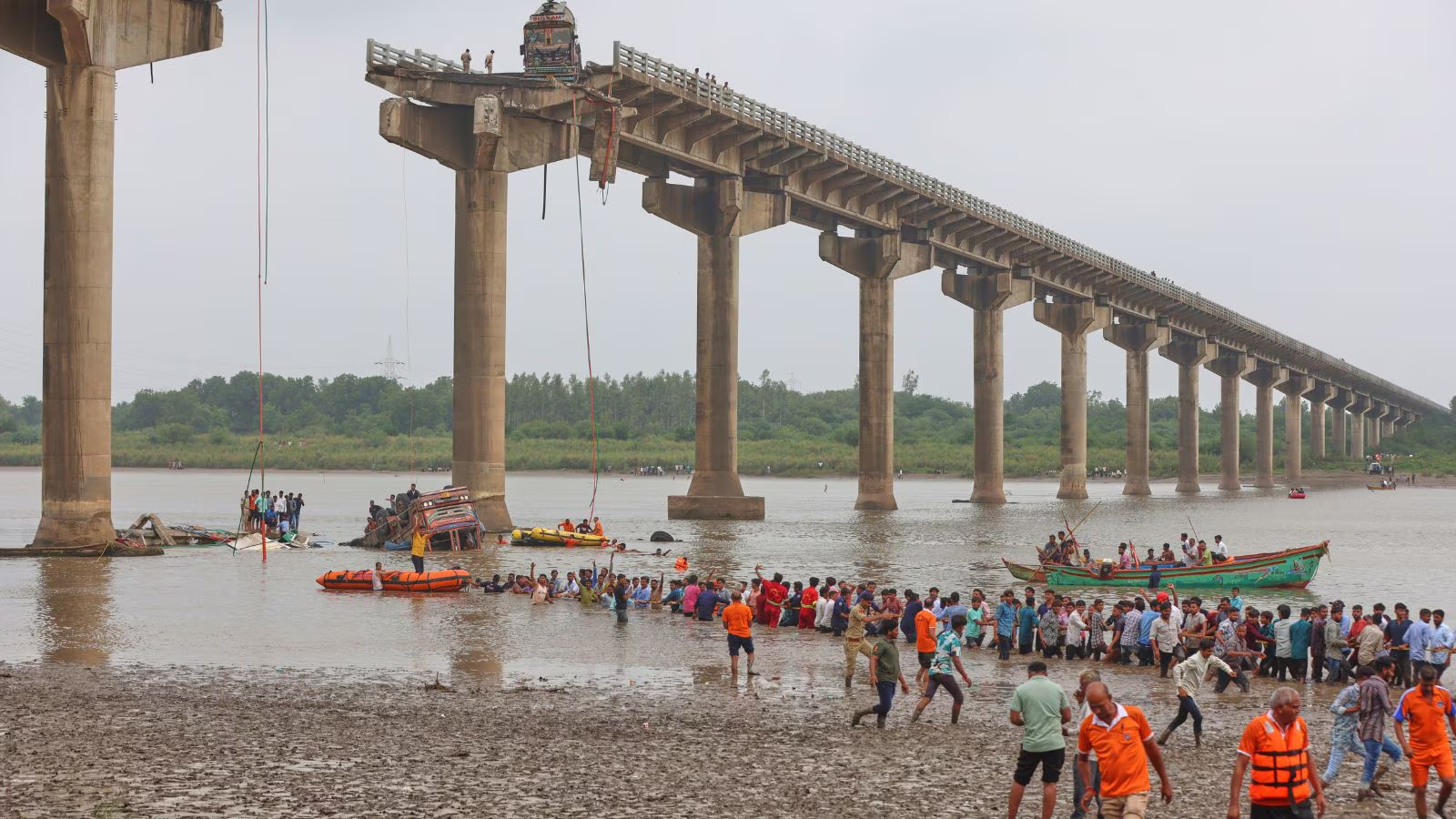
Eyewitness Accounts and Signs of Neglect
Local residents have long raised concerns about the safety of the Gambhira Bridge. Reports suggest that the bridge would visibly shake when heavy vehicles passed, with many describing it as a disaster waiting to happen. In response to these concerns, local BJP MLA Chaitanyasinh Zala had recommended the construction of a new bridge. While a survey had already been conducted and plans were underway, the existing bridge was temporarily repaired and left open to traffic — a decision that has now come under sharp scrutiny.
Government Response and Promises of Accountability
The tragic incident has prompted swift responses from both state and central authorities. Prime Minister Narendra Modi expressed deep sorrow over the loss of lives, stating on social media,
“The loss of lives in the Gujarat bridge collapse is deeply saddening. Condolences to those who have lost their loved ones. May the injured recover soon.”
The Prime Minister’s Office (PMO) announced an ex gratia payment of ₹2 lakh from the Prime Minister's National Relief Fund (PMNRF) for the next of kin of each deceased, along with ₹50,000 for the injured.
Gujarat Chief Minister Bhupendra Patel echoed these sentiments and announced additional compensation: ₹4 lakh for each family that lost a loved one and ₹50,000 for each injured individual, with all medical expenses to be covered by the state government.
In light of public outrage and political pressure, the state government has initiated a high-level probe into the collapse. A fact-finding team has already visited the site, and the Gujarat Pollution Control Board has begun investigating environmental risks, as one of the trucks that fell was carrying chemicals.
Opposition Blames ‘Gujarat Model’ for Infrastructure Failures
The Opposition Congress party did not hold back in its criticism of the BJP-led Gujarat government, calling the bridge collapse a result of “corruption and decay” under the much-publicized “Gujarat Model.” In a social media post, the party expressed condolences to the victims’ families while accusing the government of negligence and lack of accountability in infrastructure planning and maintenance.
“This tragedy once again exposes rampant corruption in public infrastructure projects in the state,” read the Congress party’s statement. “Repeated failures like these are not coincidences—they reflect a broken system.”
A Disturbing Pattern: 12 Bridge Failures in Five Years
The Gambhira Bridge collapse is not an isolated incident. Over the past five years, Gujarat has witnessed at least 12 similar incidents involving bridge collapses or major structural failures:
-
January 24, 2020: Khari River bridge in Mehsana declared unsafe.
-
December 21, 2021: Part of the Mumtazpura bridge in Ahmedabad collapsed.
-
October 30, 2022: Machhu River bridge in Morbi collapsed, one of the deadliest incidents.
-
2022: Hatkeshwar bridge in Ahmedabad was closed following an alarming stability report.
-
October 23, 2023: A segment of an under-construction bridge in Palanpur collapsed.
-
February 14, 2024: A bridge in Mehsana sank partially.
-
July 30, 2024: A metro bridge in Saroli, Surat tilted due to structural failure.
-
August 26, 2024: Halvad bridge in Morbi collapsed.
-
August 27, 2024: Bridge in Chotila, Surendranagar fell due to heavy rainfall.
-
November 5, 2024: Part of a bullet train bridge under construction in Anand gave way.
-
June 2025: Pataliya River bridge in Botad was damaged during monsoon.
-
July 9, 2025: Gambhira bridge collapsed.
This alarming pattern has ignited widespread debate about the state’s infrastructure governance, inspection protocols, and the urgency for preventive maintenance.
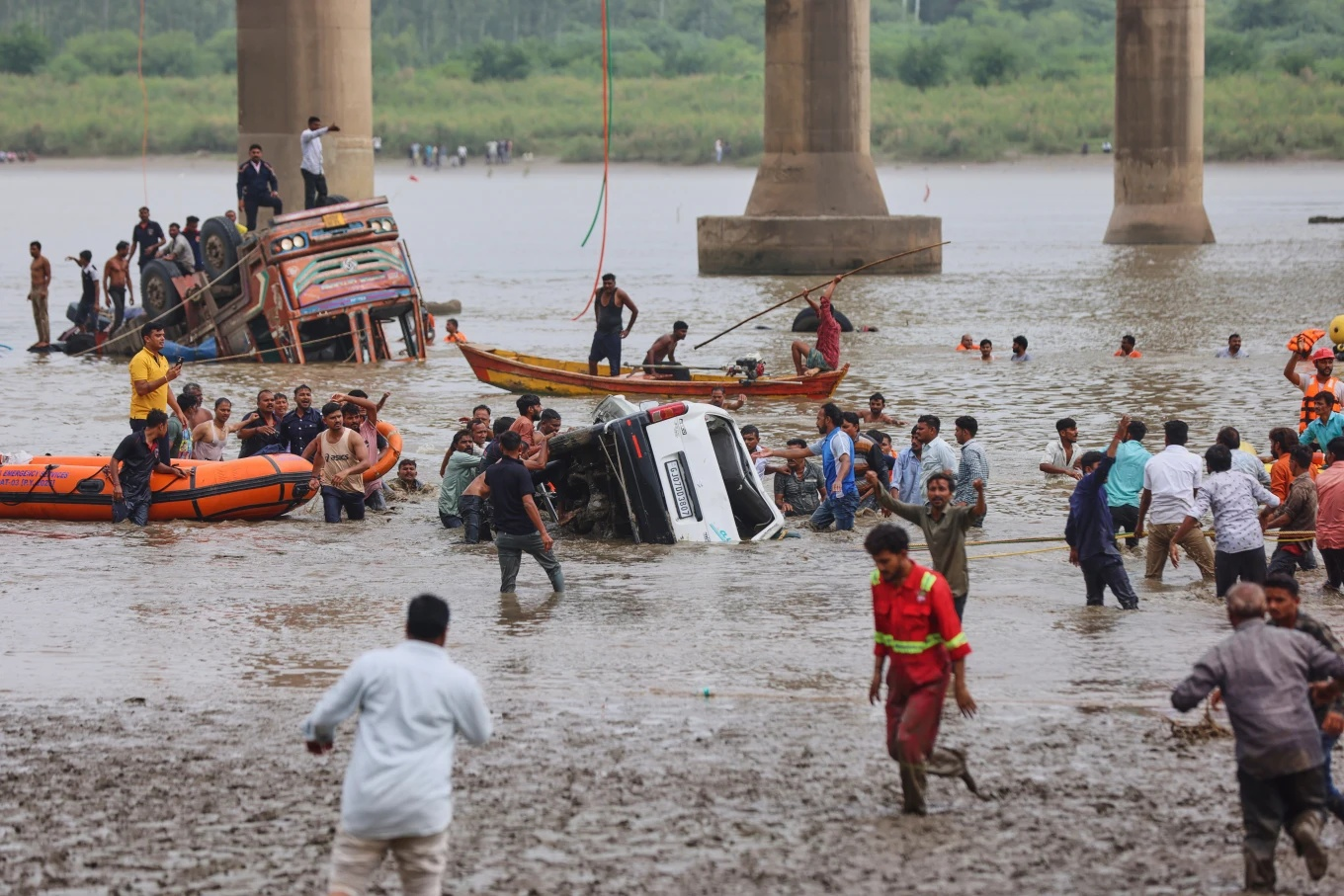
The Road Ahead: A Call for Structural Reform
As the rescue operation continues in Gambhira, calls are growing louder for a comprehensive review of Gujarat’s infrastructure safety framework. Experts are urging the state government to adopt a proactive, rather than reactive, approach to bridge safety. This includes rigorous inspections, timely maintenance, and transparent reporting mechanisms for structural vulnerabilities.
The incident also underscores the importance of integrating climate resilience into infrastructure planning, especially as monsoon-related damage becomes more frequent and severe.
A Tragedy That Demands Accountability and Action
The Gambhira bridge collapse is a somber wake-up call for Gujarat and the nation. While rescue workers brave harsh conditions to save lives, and government agencies scramble to provide relief and investigate causes, the underlying issues of administrative negligence and structural decay cannot be overlooked.
For the families grieving their lost loved ones, financial compensation is just a small balm for a wound that could have been prevented. For the rest of the nation, this is yet another reminder of the critical need for accountability, transparency, and structural reform in India's public infrastructure systems.
With inputs from agencies
Image Source: Multiple agencies
© Copyright 2025. All Rights Reserved Powered by Vygr Media.

